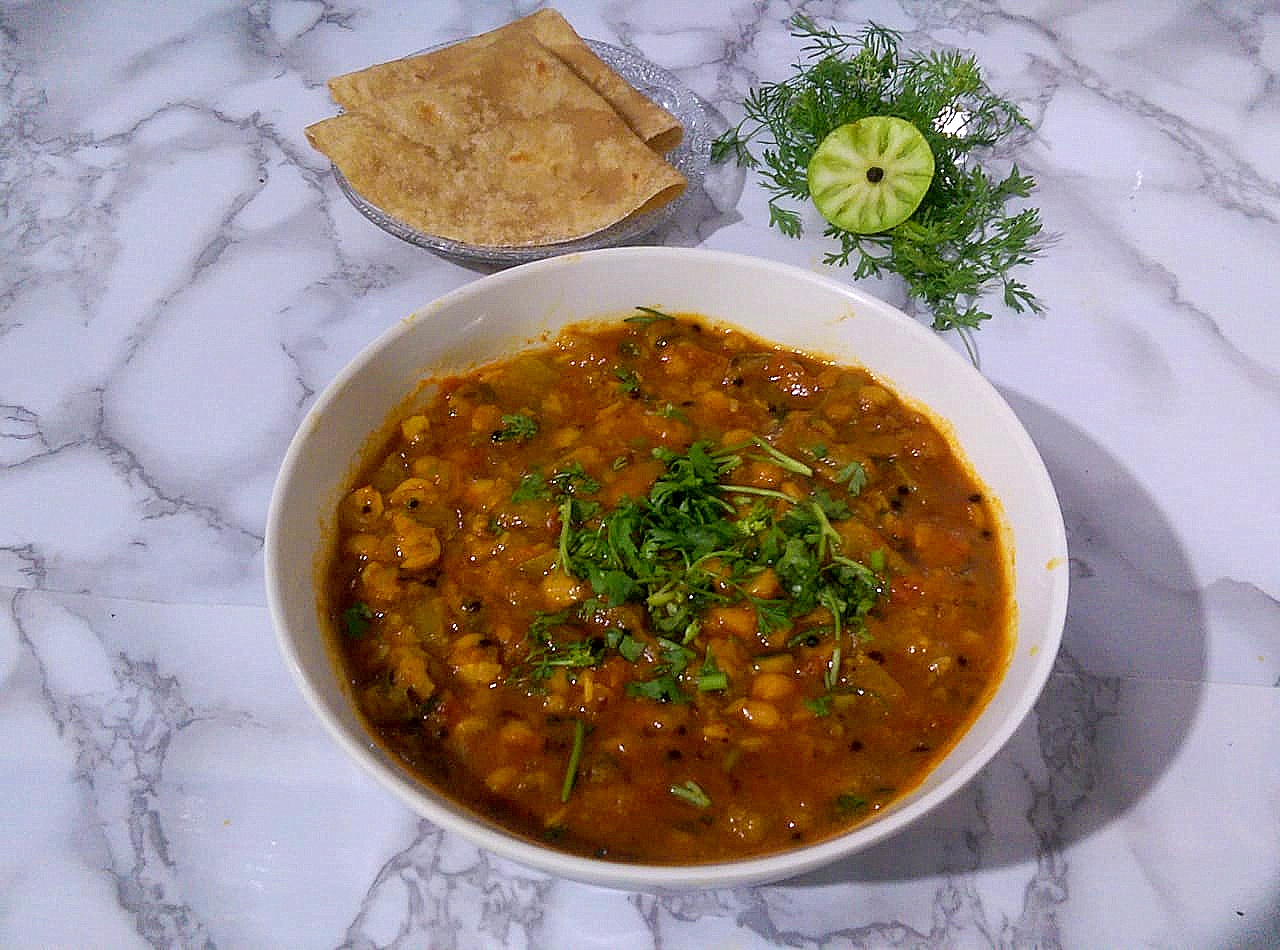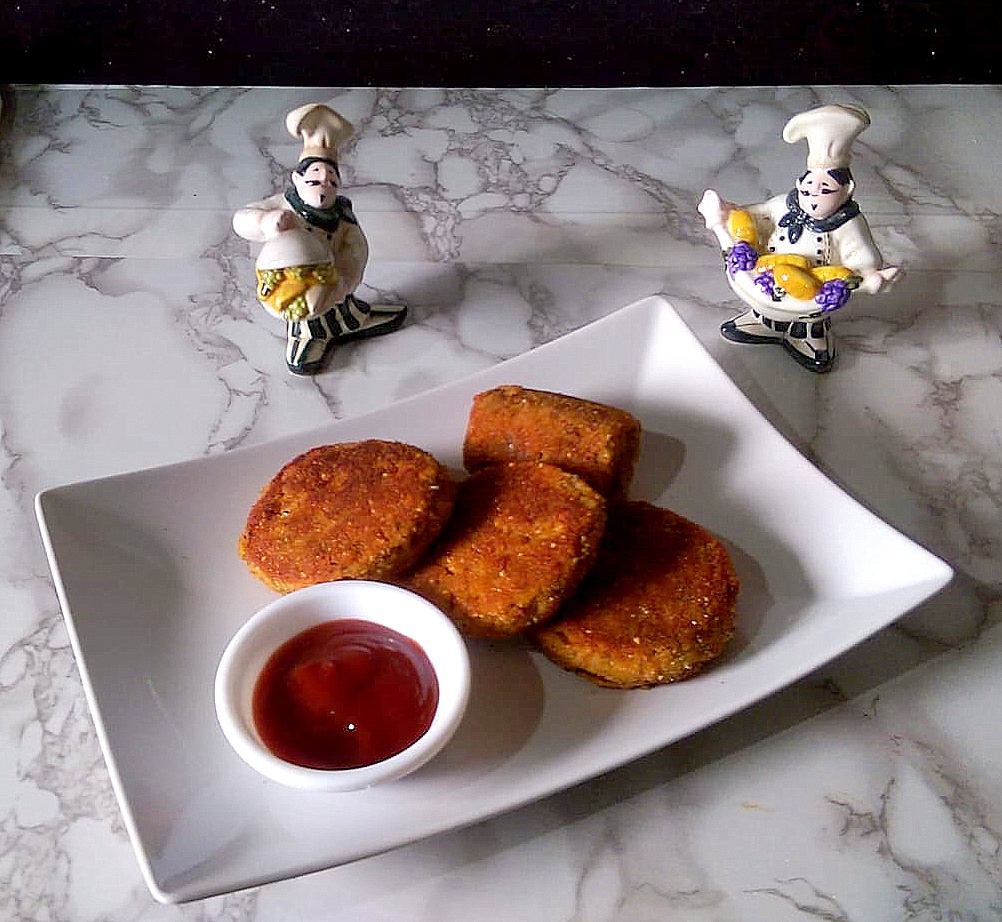Lauki Channa Dal ki Subzi is tasty gravy prepared with Moong Dal or Channa Dal. It is not necessary to soak the Moong Dal if you are using Moong Dal. This gravy goes well with Rotis and steamed Rice.
Ingredients:
Lauki (Doodhi/Bottle Gourd) – 250 Gms
Chana Dal – ¼ cup (soak in water for 30 minutes)
Oil – 2 tbsp
Mustard Seeds – 1 tsp
Cumin Seeds – ¾ tsp
Onion -1 (finely chopped)
Tomatoes (Medium sized) – 2 (finely chopped)
Marathi Masala – 1 tsp Or mix of Chilli Powder and Garam Masala
Turmeric Powder – ¼ tsp
Asafoetida – 1 pinch
Salt to taste
Finely Chopped Coriander Leaves – 2 tbsp
Method:
Drain the soaked Chana Dal and keep aside. Peel and cut the Lauki into small pieces.


Heat the Oil in a pressure cooker. Add Mustard Seeds and Cumin Seeds. Allow them to crackle. Add the Onion and sauté it till it becomes translucent.

Add Tomatoes and cook for 2 minutes.

Add the Marathi Masala (or Chilli Powder and Garam Masala), Turmeric Powder, Coriander Powder, Asafoetida and Salt.

Mix and cook till the Tomatoes become soft.

Add Chana Dal, and chopped Lauki.

Mix well. Sauté for 3 to 4 minutes. Add ¾ to 1 cup of water. Mix well.

Close the lid of the pressure cooker and cook for 4 to 5 whistles over medium flame. Turn off the flame and the let it cool down. Open the lid once it cools down. Adjust Salt, if required. Add hot water of you want the gravy to be thin and boil for a minute. If you want the gravy to be thick, boil for 2 to 3 minutes more.

Add the finely chopped Coriander Leaves.

Mix and serve.

Note:
Select tender Lauki (Bottle Gourd). Prick the Lauki with the nail. If you are able to prick it easily, then you are sure that the Lauki is tender.
The color of the Lauki should be light green. The hard Lauki would be whitish green.







Thank you so much for this wonderful article. St. Catherine is such an underrated saint who I feel should be more appreciated. It was a wonderful accident coming across this article. Thank you!Thank you so much for the very interesting article on Alida Withoos! I am writing a book on Dutch paintresses in the 17th century, and make a point of including some of the lesser known women painters of that time, like Aleijda Wolfsen and Alida Withoos. One tiny correction: the Dutch for ‘year of disaster’ is ‘Rampjaar’ (not: Raampjaar).I had the opportunity to see this at the FestWochen in Vienna, and I must say it’s one of the most amazing things I’ve seen on a stage. I thought it would be tedious to be around te theatre for 24 hours but it ended up transforming intoreal cathartic experience. The simplicity of the stage actually gave us a deeper insight in what was happening there, it was not about the art direction to took over, but for the bodies to create momentary structures, to become greek columns. Theatre, opera, singing, dancing, raw meat, glitter, paint, penises, plants,drums, smoke… It’s a ritual of what tragedy is, what it does to us, and most important of all it’s an explosion of madness. The whole experience ended up being a collective catharsis, and I thank Fabre for creating such an amazing piece.Have a great 2023 and thank you for all your hard work again this year.I’ve been browsing online more than three hours today, yet I never found any interesting article like yours.